I cannot resist. Today’s gem is the turtle who swam by us. We were swimming into shore after a wonderful dive at a dive site called Windsock when the turtle crossed our path.
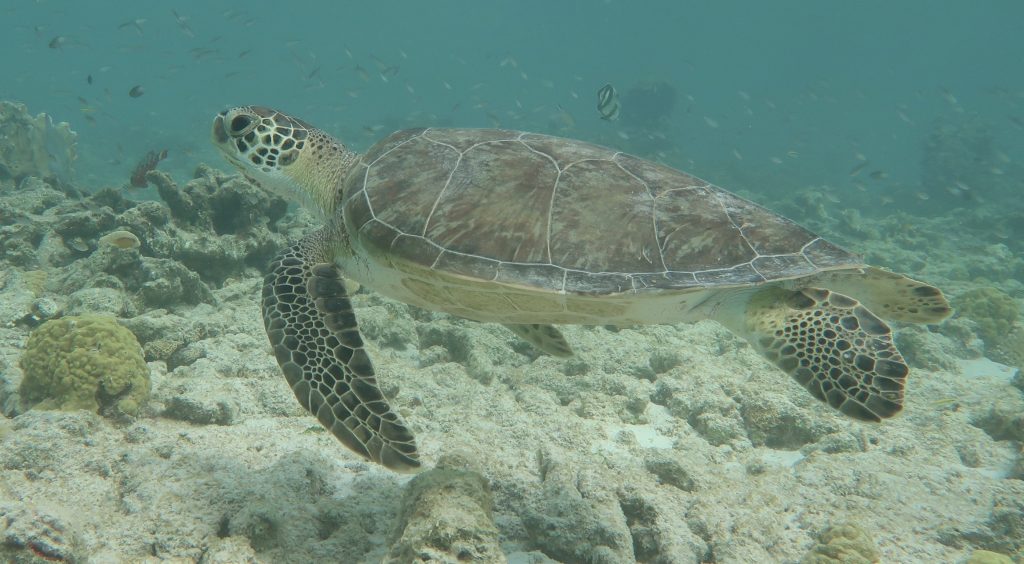
The Gem of the Day is the Coral Paradise Resort where we are staying. Murray and I think this is the only place to stay in Bonaire.
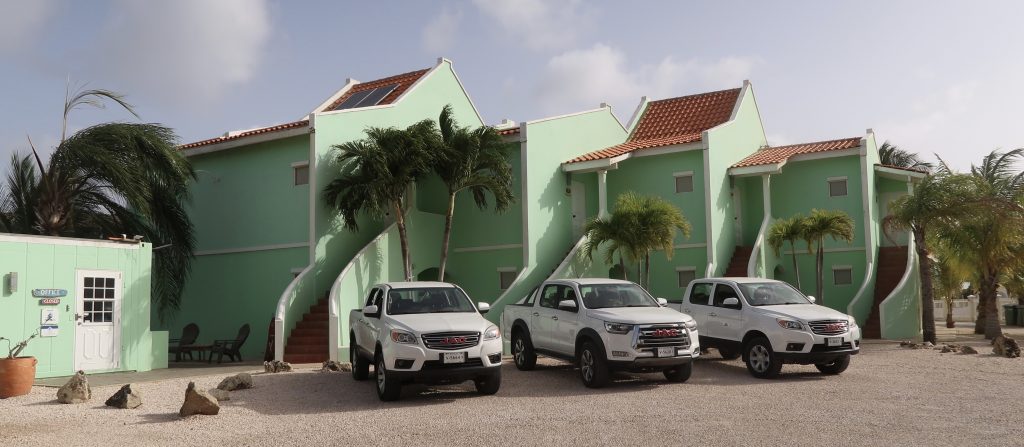
The resort is owned by two Canadians, Caroline and Vincent. They are great hosts and take incredibly good care of their guests.
The resort has eight rooms, all overlooking the pool. Each room has a well stocked kitchenette, two beds, a small table and chairs, a bathroom and a large closet. We find it a perfect little home. We make breakfast in the morning, pack a picnic dive lunch and usually go out for supper. There is a BBQ out on the patio by the pool for those days we decide to eat in.
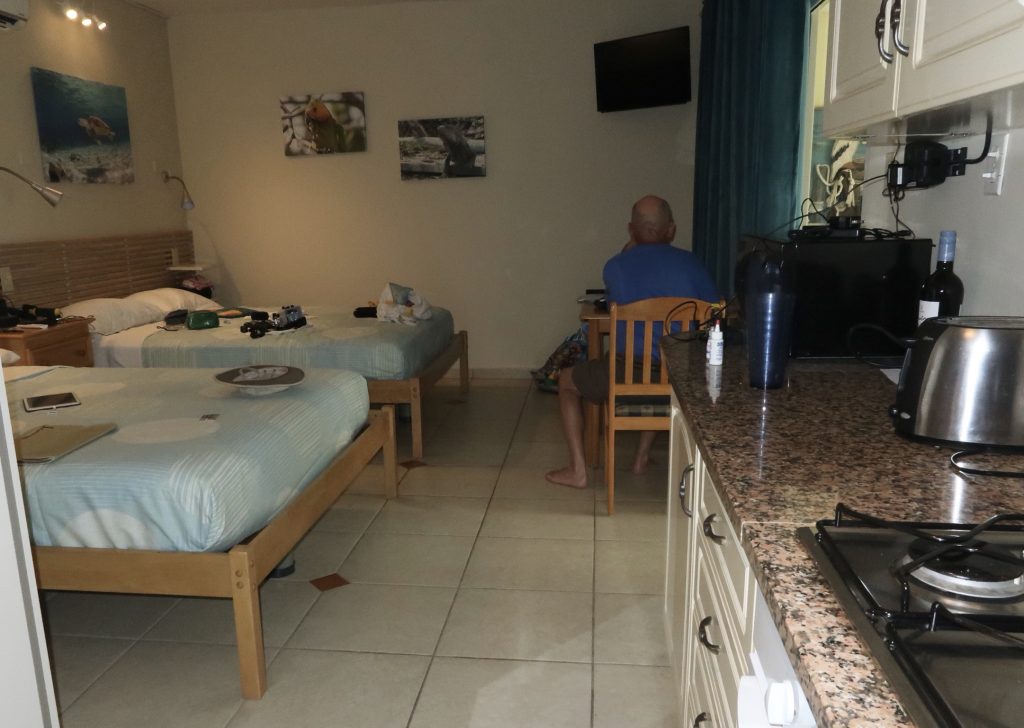
The Coral Paradise has a relationship with AB Car Rental and AB Dive so the resort guests pick up their rental vehicles at the resort instead of the car rental agency. Also, AB Dive delivers scuba tanks to the resort every day for us. We just have to go to the dive locker area in the morning and our tanks for the day are there waiting. We are very spoiled!
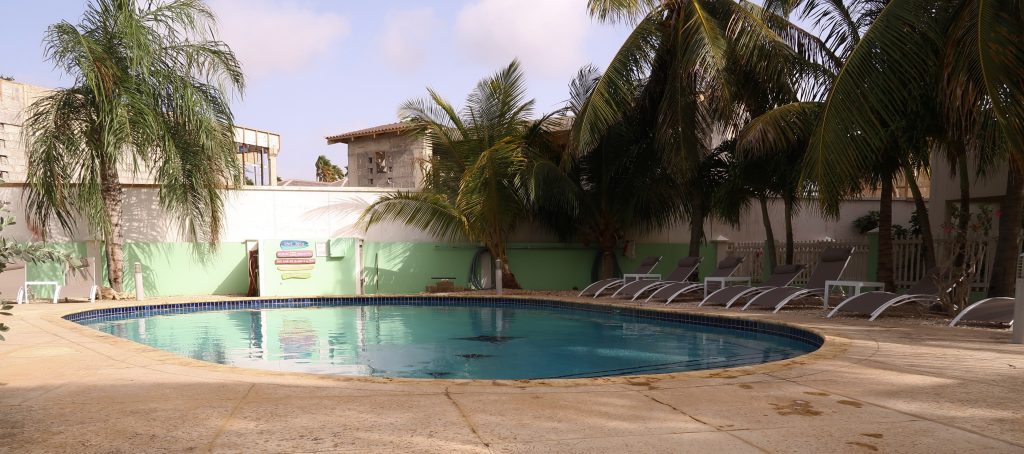
If you are wanting to go to Bonaire and are looking for somewhere to stay, email Caroline and she will take wonderful care of you.
Surprise! We are in Bonaire! Our friend B wanted to go diving really bad and asked if we wanted to go to Bonaire. After considering for about 3 seconds, we said sure! We then contacted our Syracuse, New York friends D&C and asked them if they wanted to join us too, and after considering for about 3 seconds, they said sure!
So, here we are, five keen scuba divers enjoying the fishes and creatures in the waters off Bonaire.
Murray and I will be posting ”Gem of the Day” to show bits and pieces of Bonaire and diving. Today’s gem is this friendly lady we found in shallow waters on our first dive today at Pink Beach.
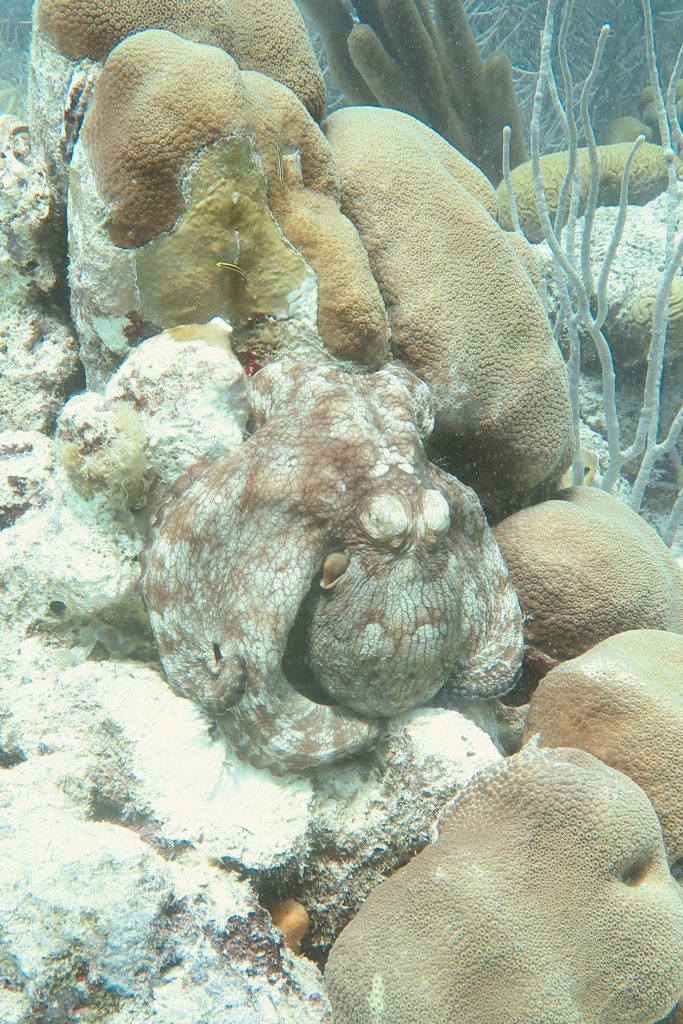
Final thoughts on our Cuban experience.
The people make a country and the people here in Cuban are friendly, smiling and helpful. They are very willing to teach a couple of Canadians abit of Spanish or direct them to the correct street. They return our greetings of good morning with a smile. We chatted to a youngish fellow in Trinidad for some minutes about COVID and life and he was very quiet and conversational.
Many locals purchase breakfast at small shops, usually someone’s front window, for 20 pesos which includes a small ham and cheese sandwich. Lunch is a pizza, like we have been eating and supper is pizza or often eaten in a restaurant – fish, chicken, pork or beef.
The scuba diving off Cuba was good Caribbean diving. I would rank it just slightly below Bonaire. If your thing is sharks, then Cuba is the place to go. For little creatures, and unusual fish, Bonaire is the choice. The terrain in Cuba is more varied but a much wider area is used for diving. If given the choice, I would go to Bonaire as I like the little critters and the ease of travel, obtaining food and accommodation are much easier.
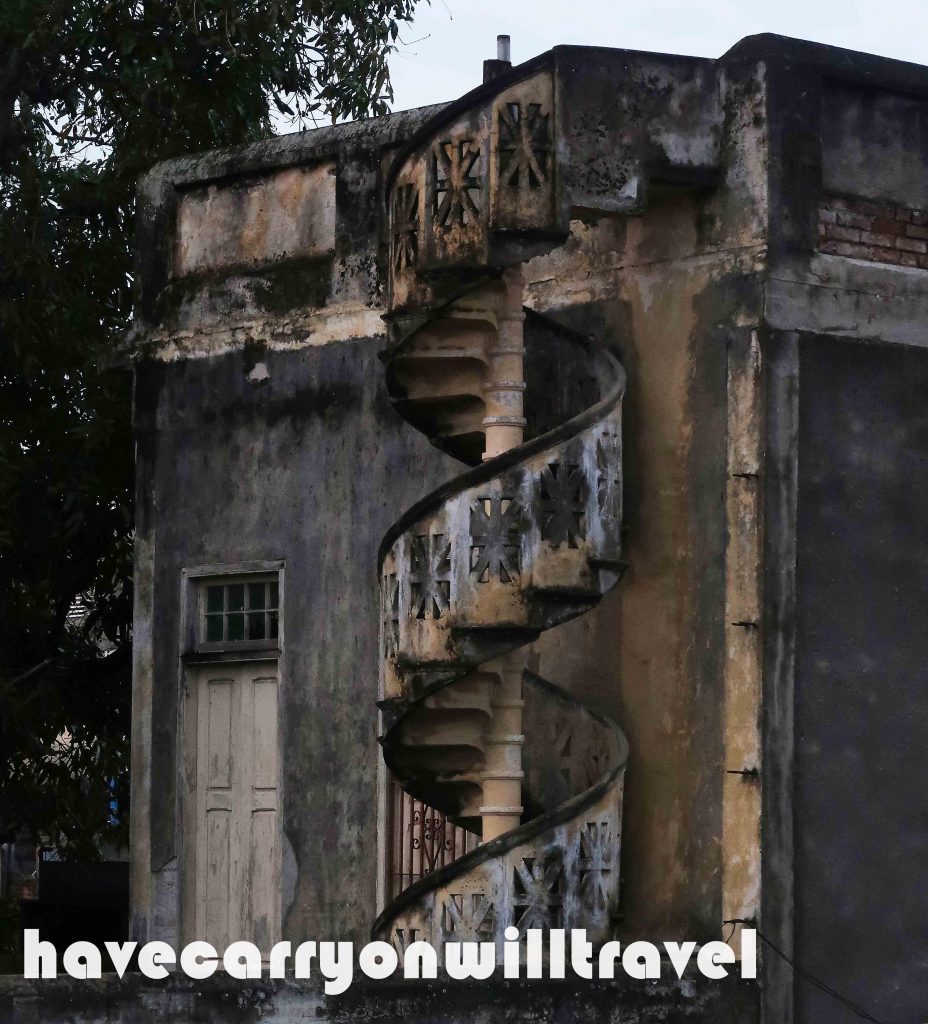
Cuba has mandated wearing masks indoors and outdoors. Omelio suggested we wear them. He has seen many tourists not wearing them and thinks it inappropriate. We agree. To be good global citizens, even though the country we come from has done away with mask wearing, we should follow the rules of the country we are in. So, we wear our masks faithfully, and boy is it hot wearing one in plus 30 C outside!
Windows and doors do not have any glass or screens they have a grilles over them. I think it may be so people on the street cannot have easy access to the house interiors. Cuba doesn’t appear to have a particularly bad crime problem so the grilles exist to keep the folks honest and, perhaps, tradition alive.
For our last supper in Santa Clara, we eat at the Santa Rosalia restaurant. I order the roasted chicken and Murray has the stewed beef. We order like pros and use our best Spanish and the waiter actually understands what we are saying. The food is very good once again and we enjoy it in a beautiful colonial restaurant with high ceilings, tall windows and amazing decor.
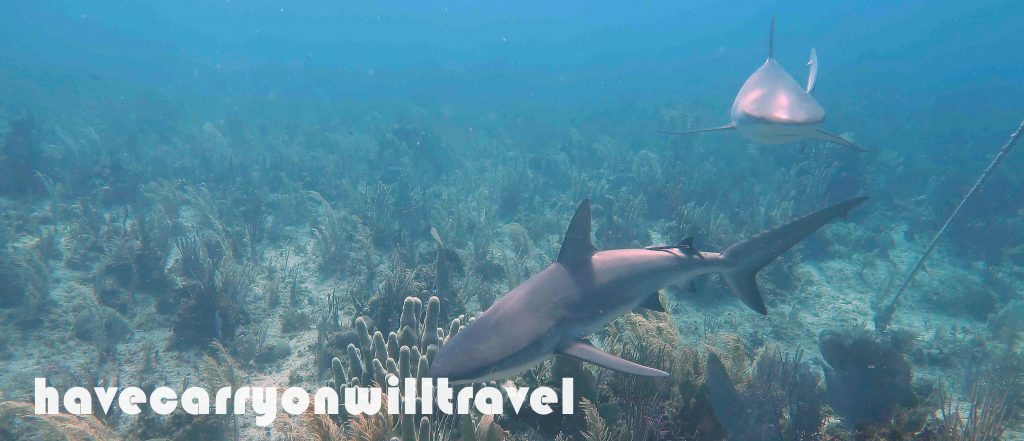
Breakfast is at 8:00 this morning and the ladies have prepared a feast for us. For Murray, they bring out a ham and melted cheese sandwich, an omelette, a small loaf of bread, mango marmalade and tea. For me, they have prepared a stewed chicken leg with potatoes and rice. It is delicious!
One of the sights we visit today is an art gallery. The art is created by local Cuban artists. The works are modern and have a different feel to them. Murray thinks that they have been sheltered from the world so they have their own kind of style. A Cuban outlook on life, perhaps. Some of the paintings we both really like. It is a worthwhile visit.
For lunch every day we have been eating small cheese pizzas. Murray talks as to a young fellow in the pizza lineup today and this fellow said the before COVID the price for a pizza was 8 pesos. The price has gone up since there are shortages of cheese and eggs, so the price is 40 pesos now (about 50 cents Cdn). They are filling and the crust is really quite good.
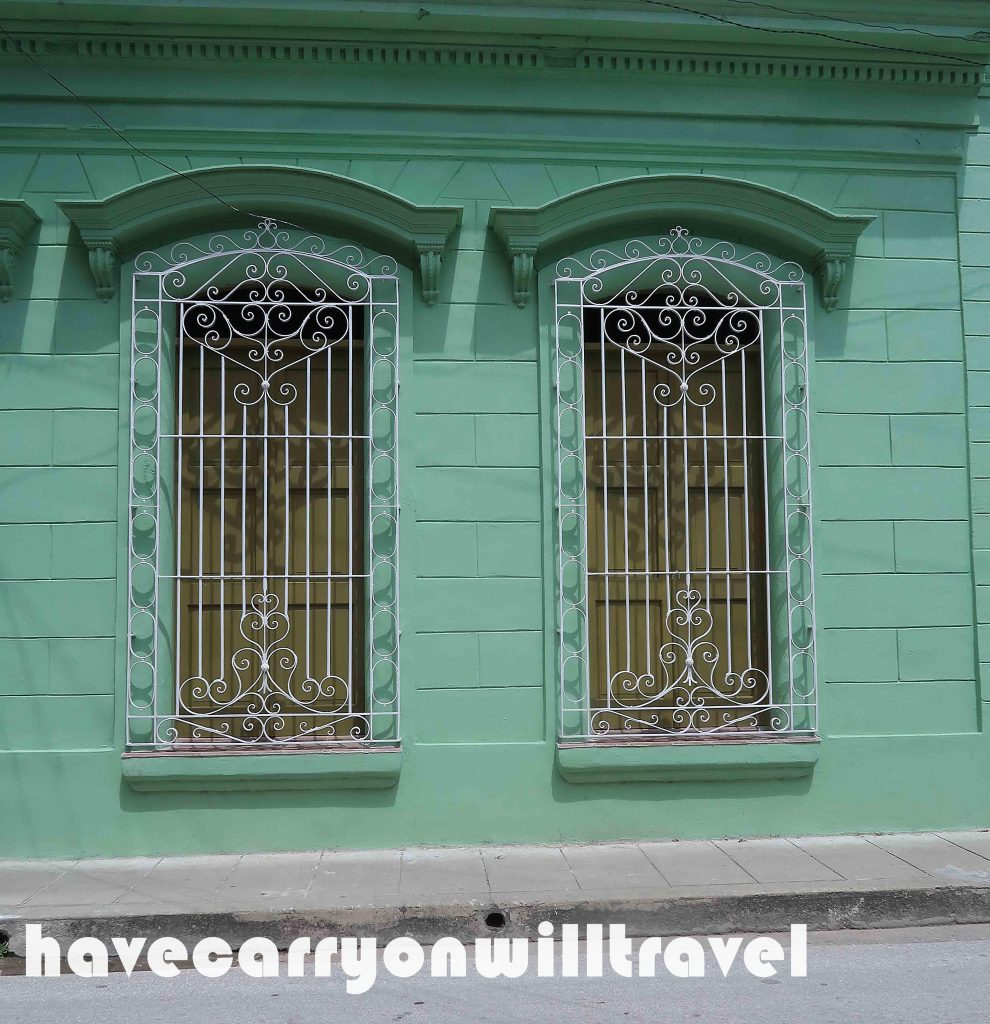
We wander in the morning and then head back to the hostal for the afternoon’s heat. When we arrive back at the hostal is it 32C in the shade! The breeze and shade make the garden a great place to rest. The garden cat keeps wandering by on her quest to catch mice. (This morning, while we ate breakfast she caught a mouse and dutifully carried it into the house!)
We eat supper at a restaurant called La Bodeguita del Medio. There is also one in Santa Clara, which we ate at. The portions are huge, so we share a Ropa Vieja, which is shredded stewed beef in a light tomato sauce with peppers and onions. It is served with rice, cassava and cut up tomatoes and cucumbers. I drank a mango juice and Murray had bottled water. We paid 250 pesos, which equates to about $3.30 Cdn, including the tip.
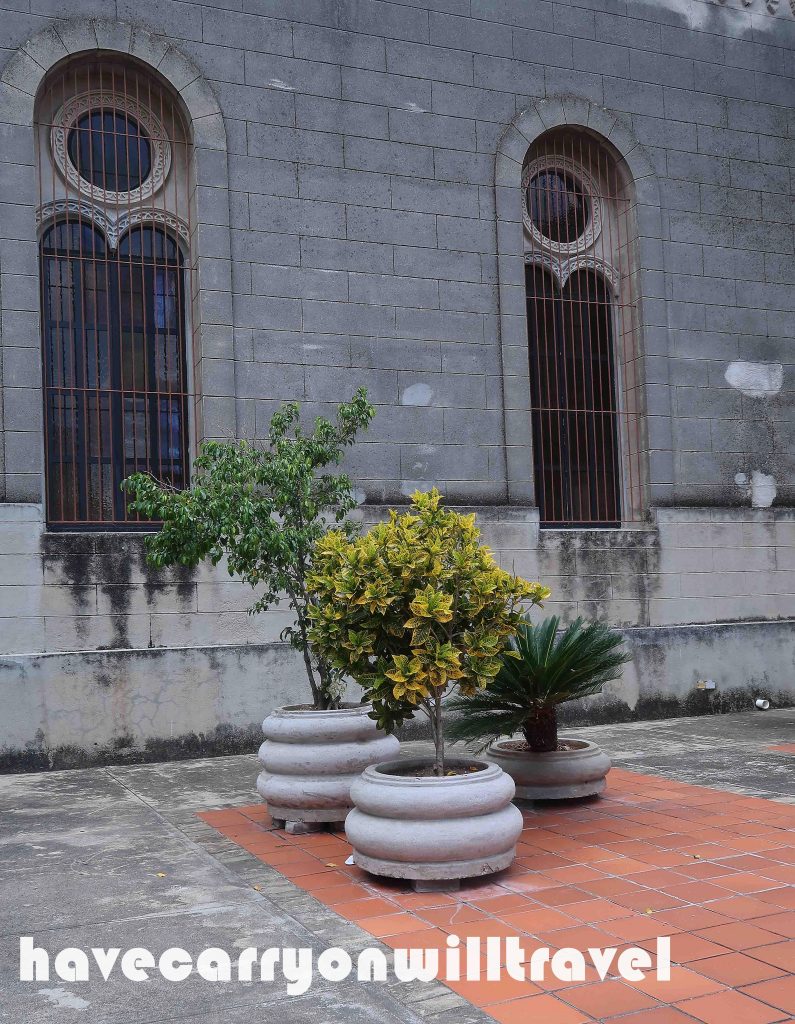
Everybody sells something here. Open up your window on the street, put a few items in view and you are a retailer. The buyer stands on the sidewalk and asks for what they want and the transaction takes place through the wrought iron grill. Most of the stores also work this way. One can enter and wander in stores that sell larger items, furniture, scooters. The ‘tourist area’ has more traditional type stores, I presume because it is more familiar to the foreigners.

There are dogs in Cuba. Street dogs, not many but a few feral animals that scrounge food from the few scrapes that are about. And they are very strange looking dogs. Small, short legs, and long bodies. It looks like all the dogs in the country descended from two. Some people have pet dogs, but not many, as there are some different breeds hanging out in the windows of houses and some out for their daily constitutional. I’ve only seen a few cats. I suspect they are kept as mousers and are house cats. The pet of choice is a bird. There are cages hanging outside of residences which is a dead give away that they are pets but the oddest thing is people take the birds for a walk. Cage and all of course. I have noted a few people sitting in the park with a caged bird on the bench beside them. I find it strange but then again I have never owned a bird and really have never considered that one shouldn’t be taken for a walk.
Sunday, we leave Santa Clara and head for Trinidad. Every article on the net describes Trinidad as a must-see place. First impression is blah! It is fairly well kept with the exterior of a lot of the buildings maintained. From that perspective it is nicer than Santa Clara. Our first tour of town reveals a fairly slow place. Santa Clara is a much more vibrant city.
The farms are surrounded by a living fence. The barbed wire is held in place by the branches of trees. These branches must be placed in the ground green because foliage is sprouting from the tops of the posts. If they continue to grow there will be quite a barrier in 20 years.
We arrive at noon and figure we should look for lunch. We stop at the first restaurant we come to and are reading the menu when a worker comes to the entrance to ask us in. We ask about the pizza and she quotes a price twice what was written on the board behind her. She just lost our business and we did not even look at the place again. Tourists should not all be treated as stupid.
The infrastructure is not in as good shape as Santa Clara. There are holes in the sidewalk, as in most Latin American countries, and there are wires hanging down here and there.

The plazas, or squares, have no shade. We found this odd. In most cities the main square is a happin’ place but with no shade and the sun beating down no one seems too interested in gathering there. We gravitate to those plazas when we need to rest. They are great place to watch the world and that is a lost opportunity here.
As we trapse through the ‘old town’ what we find is a tourist trap. The place is OK but there are touts, beggars and expensive restaurants at every corner. Several times were are asked outright for money. They offer no product or service.
One thing that is very good about Trinidad is the people on the street are use to gringos and a good number of them greet us with hola or buenos dias. Santa Clara is much more metropolitan, maybe, and much less of a tourist destination so people are more city like and unlikely to acknowledge your presence.

There are no front yards as we know then in North America. The front door of all the residences open onto the sidewalk which is immediately adjacent to the road. In order to get ventilation, the door and the front windows, which are glassless and screenless, are left open. It is easy to see into peoples’ abodes and they are quite nice, very livable. Not as ‘modern’ as we would have in Canada but well kept and presentable. The quality diminishes as we pass through the ‘hood’ but still clean and acceptable.
Everybody sells something here. Open up your window on the street, put a few items in view and you are a retailer. The buyer stands on the sidewalk and asks for what they want and the transaction takes place through the wrought iron grill. Most of the stores also work this way. One can enter and wander in stores that sell larger items, furniture, scooters and in super markets. The ‘tourist area’ has more traditional type stores, I presume because it is more familiar to the foreigners.
As mentioned before the windows do not have any glass or screens this is good for ventilation but might not be so good for security. I don’t know the exact purpose but every door and window has a grille over it. I think it may be so people on the street cannot have easy access to the house interiors. Cuba doesn’t appear to have a particularly bad crime problem so the grilles exist to keep the honest, honest and tradition dictates.
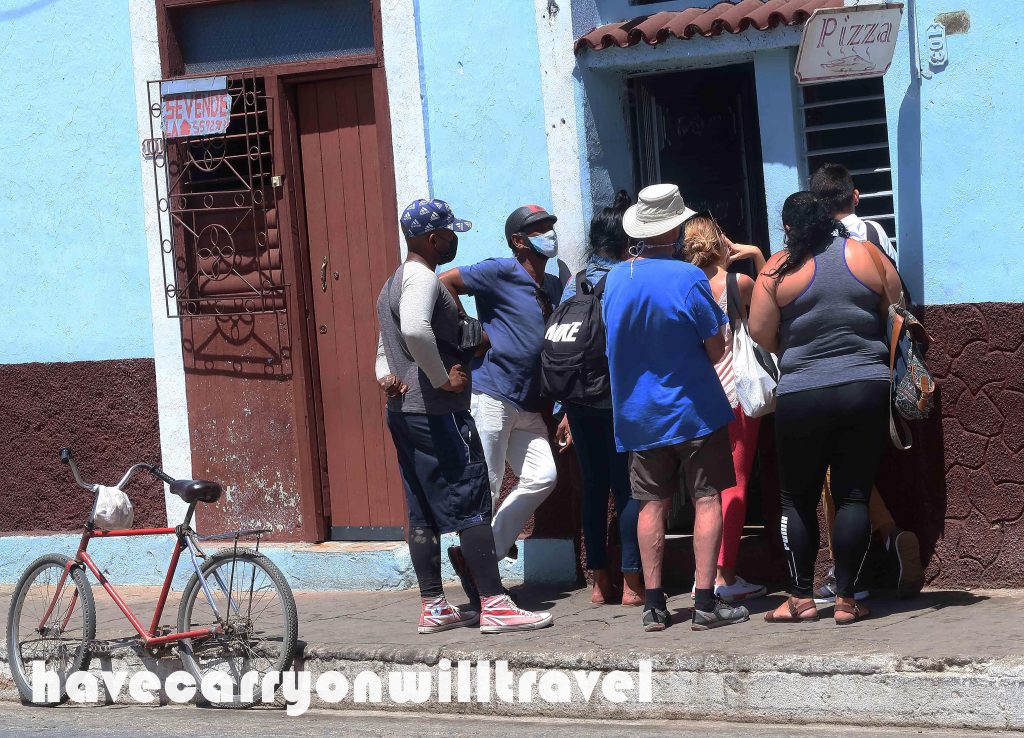
I don’t think the country is a poor as we are meant to believe. There are some inconveniences like not everything is available all the time, but things must show up every now and then because people have modern washers, computers, newer cars, electric scooters, flat screen TV’s and just about any other thing the first world has. Not having constant access to these items means people are fantastic at repair and reuse. Something the rest of the world could learn from the Cubans.
Trinidad, Cuba is our destination today. Omelio, the owner of Casa Mercy Hostal in Santa Clara has arranged a taxi to take us there. An 85 km journey for $50USD, and fortunately not down the National Highway. It takes about two hours as we are on narrower roads with lots of traffic, two wheeled, four wheeled and four hooved.
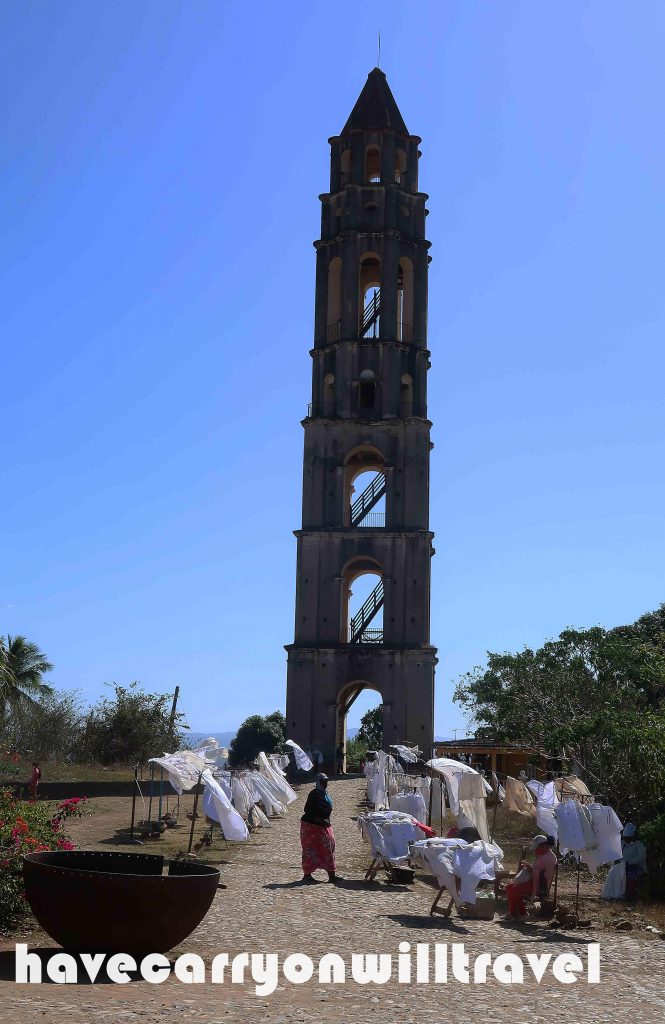
Just outside Trinidad, we stop at a tourist attraction at Manana Iznaga, an old plantation where there were slaves. There is a tower we climb up, for $50 pesos each (65 cents Can) to see the view of the surrounding countryside. It is a beautiful vista. (I read, once we are home, that the tower was built in 1750 to watch over and control the slaves that were working in the sugar cane fields.) Because this stop is on the tourist path, there are many vendors and they are quite pushy (in my view). I get followed more than a few times even though I say “No gracias”. I finally make a beeline to the taxi, get in and ignore the woman who has followed me to the car. Sigh.
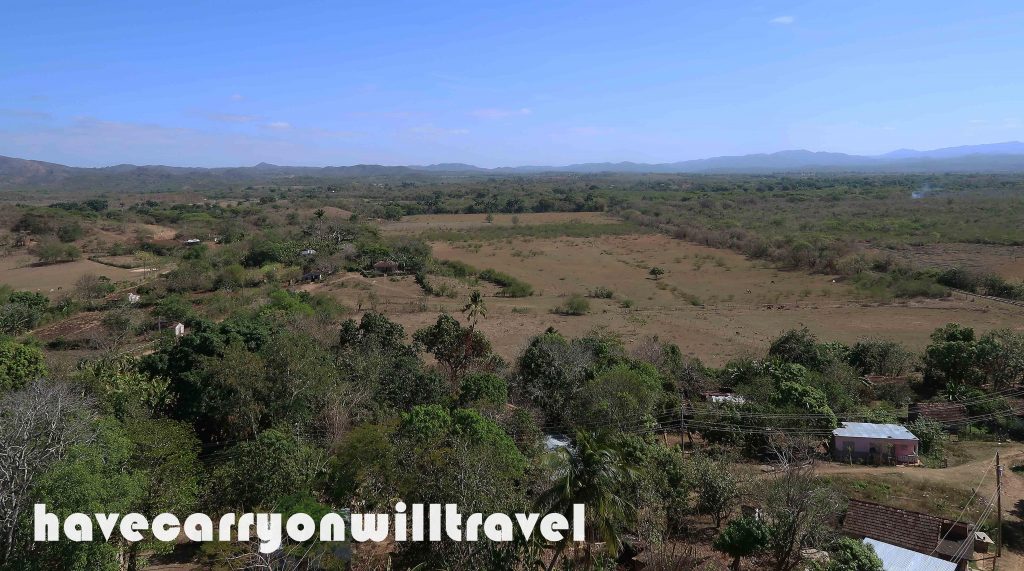
We are dropped off at Dona Ramonita’s and the door is answered by Pablo who takes us inside. The hostal is an old colonial house, with a narrow frontage and a warren of rooms and a garden in the middle. We meet Ramonita, who must be over 90, who is all smiles and is so happy we are there. She reminds me of my dear Aunt Patra, who lived in Athens. We pick the green room over the pink room, both on the edge of a huge garden. The garden contains lemon, papaya, mango, and banana trees. I think I like it here.
We organize slightly and go out to scout around. Except I leave the map and my mask on the bed. We wander around anyway and get lost. I feel so bad not having my mask on as it is mandated to wear a mask inside and outside and even though we see tourists without masks, we want to follow the rules. After stopping for a quick pizza lunch and asking directions, we make it back to the hostal. We study the map, locate my mask, lay down and promptly fall asleep for 20 minutes. Guess we needed a nap.
On our second try we walk to the historic center of Trinidad. It is cobblestones with roundish rocks set into various mediums to make roads. They are hard to walk on and I watch my footing while I am moving. The place is quite empty with only a few other tourists wandering around and some local “entrepreneurs” – money changers, trinket sellers, taxi drivers. They seem to take a “No gracias” much better here. We wander the streets locating restaurants and work our way back to the area near our hostal and end up at a BBQ Bar where we order supper.

Tomorrow we will wander more of Trinidad and see what makes this town tick.
Today started out with Debbie explaining to me that the pineapples here are small and the meat is white rather than the golden colour we are used to. Yesterday the other fruit fact I learned is, in Cuba, papaya is a reference to a woman’s private parts. So here you had better be aware what you ask for or when it shows up you might be in for a surprise.

We left the boat behind at 8am. Another private taxi ride. There are few cars in the hinterland. Walkers, bicycles, horses and horse carts, scooters, motorcycles and tractors but not many autos. When we reach the highway the traffic increases. All types but noticeably more cars. It’s Saturday and everyone is on the move.
With narrow roads and all these different types of traffic the drivers have to be aware and patient. A motor cycle each way and a car passing one of them is tight. Following a horse and cart is slow and a lot of the time you have to wait.
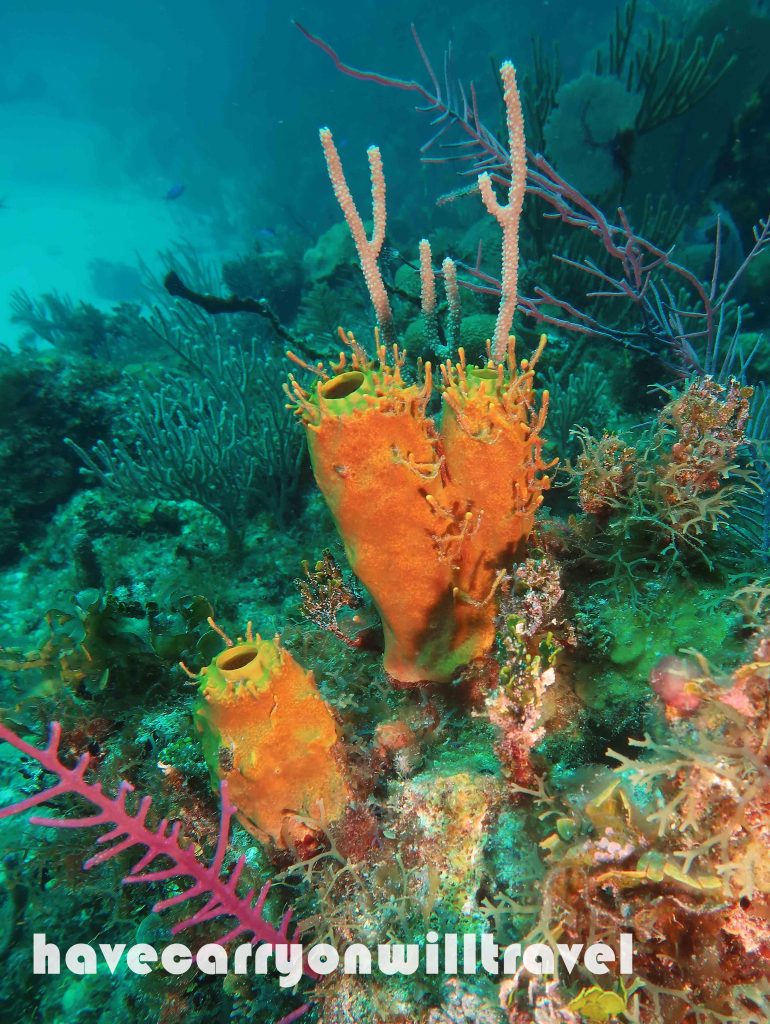
A half of an hour from our destination, on the ‘National Road’ there is an accident. Smallish SUV type car in the ditch on the roof, a ’57 Chevy sideways on the road with a horse cart molded to its front end and a dead horse on the edge of the road. Three people and the horse are dead. There is one lane that is passable but the police decide to stop the traffic in both directions. Bad decision. Mayhem ensues. One might think that one long row of vehicles along the gutter would be the way things happen. Nope. The cars are 4 and 5 across the entire road as impatient drives edge their way to the front of the line. This might be OK if it was a divided highway but it is not and the traffic on the opposing side of the accident is lined up the same way. When the cops decide to let the traffic go no one will be able to move. We sit and wait and watch the goings on. There is not ambulance, nor tow trucks. There are a couple of fire engines and a couple of police vehicles but nothing that can move a dead horse or a broken car. A bit of progress is made when they upright the car in the ditch and use a fire engine to get it back on the road. For some reason it is decided that taxis can proceed and we are let through the blockade. As we pass by I see that there is person in the passenger seat of the SUV they retrieved from the ditch and they are trapped. Don’t know if they were dead or alive but no one seemed to be trying to extricate them. An hour and a half delay and opportunity to experience Latin American culture operating at its best. Strange!

We get back to Santa Clara at noon on Saturday. The place is hoppin’. Not just the central area as it was on the Friday we were here last. Even the burbs were busy. The central square is quite full and the small street pizza vending places are super busy. The theatre has some sort of dance competition going on and the bus stops are packed.
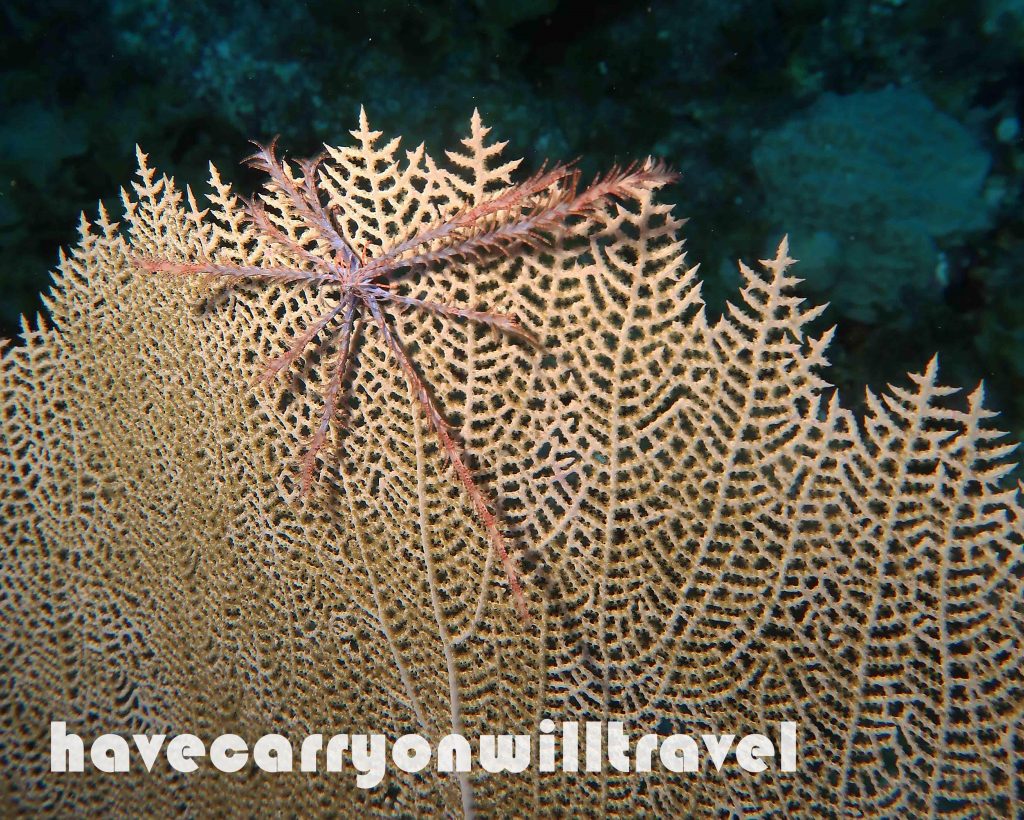
We spend a week aboard the Avalon IV, a combined fishing and scuba dive boat. An odd combination of sportspeople: fishers who, basically, torture a fish trying to catch it and divers who love and protect fish. Some of the divers would not even talk to the fishers. We, of course, did. We met three other Albertans on a fishing holiday and two lovely older gentlemen from Dublin, Ireland. We sat with the Dubliners at meals and enjoyed their company very much.
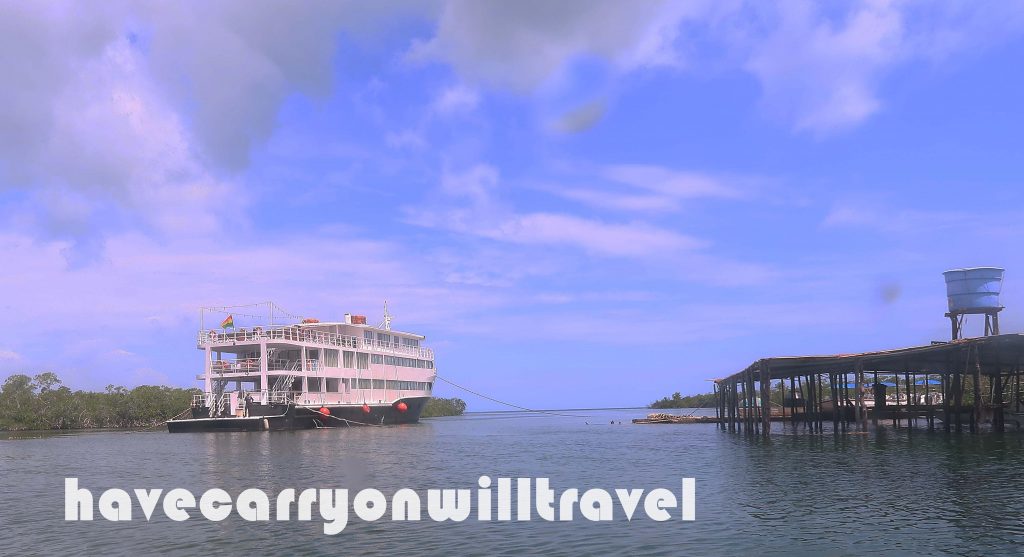
After traveling for about 3 hours, we are in the Garden of the Queen. This marine area was named by Christopher Columbus to honour Queen Isabella, of Spain. The first night is spent on open water close to some mangroves. While we are out diving on our first dive day, the boat moves into the mangroves. The company has set up quite the operation and houses fishing skiffs, fishing guide accommodations, fuel tanker and storage sheds all inside the area. Very functional but not so idyllic for my tastes. Plus we are now mosquito food.
We learn that the mangroves are home to many creatures. All sorts of birds: Cuban Eagles, Ibises, Herons. Land creatures: Iguanas, Hermit Crabs and furry creatures called Cuban Hutia. And of course, the infamous water creatures: El Niño, the Saltwater Crocodile. El Niño is semi tame and will come most times if called as he knows there is usually chicken as a treat. The dive guides and some other brave souls (not us) snorkel around him. “Just stay away from his mouth” is the advice!
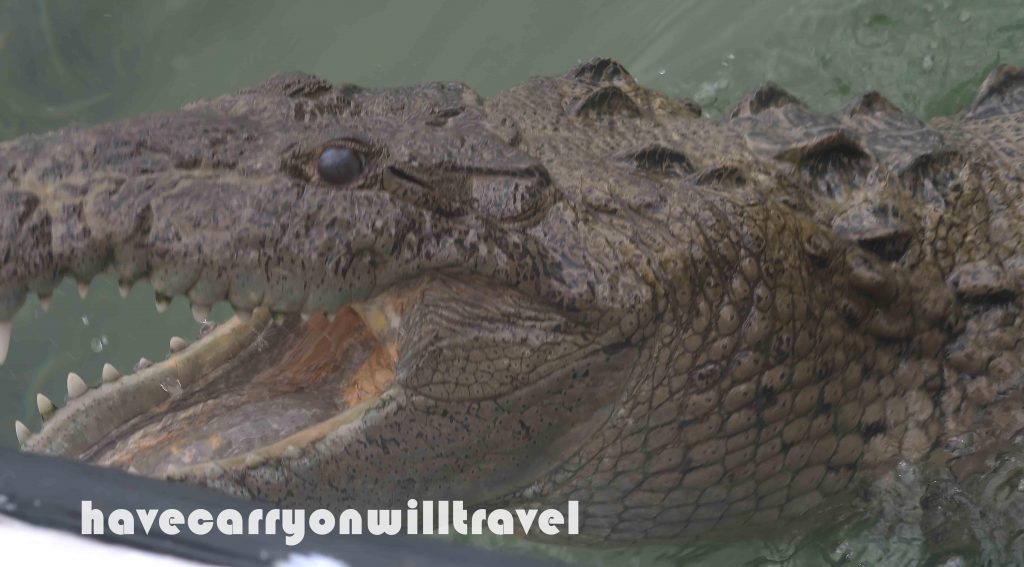
We have come to the Garden of the Queen because we heard how healthy the reef is. A sign of good health is the number of sharks in the waters. Oh are there a ton of sharks! On every single dive we have anywhere from three to eight sharks swimming with us. Caribbean Reef, Silky and Blacktip are the usual species. They do not check us out and go away, they stay with us through the whole dive.
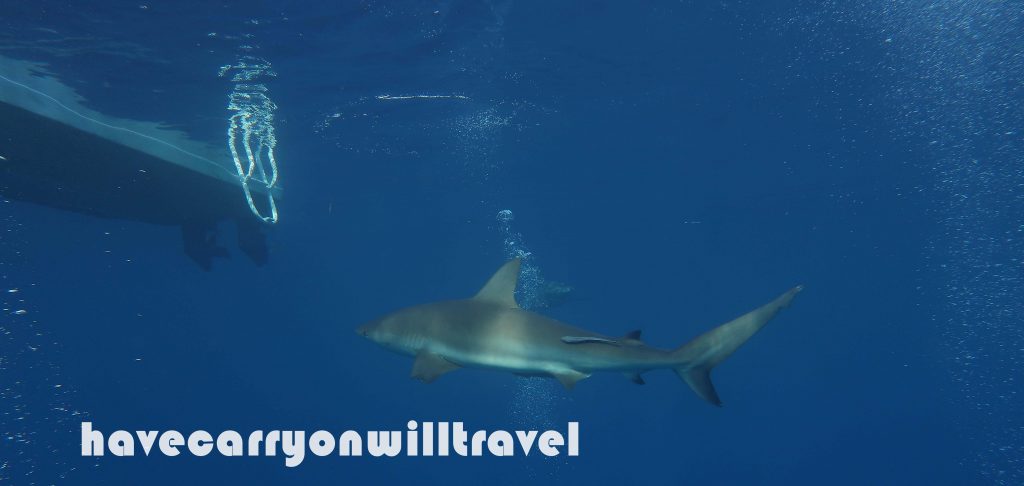
The terrain below the water is quite varied and interesting. We see no bleaching of coral, but there is lots of algae growing, which is a sign of warmer water. There is not a ton of fish everywhere but we encounter large schools here and there. Some of the dives are deep as we look for big creatures like sharks and eagle rays. The diving is easy as there is almost no current. There is some surge but surge just makes it fun to move through the water. We see a few fish and creatures we have not seen before in the Caribbean, so that is exciting.
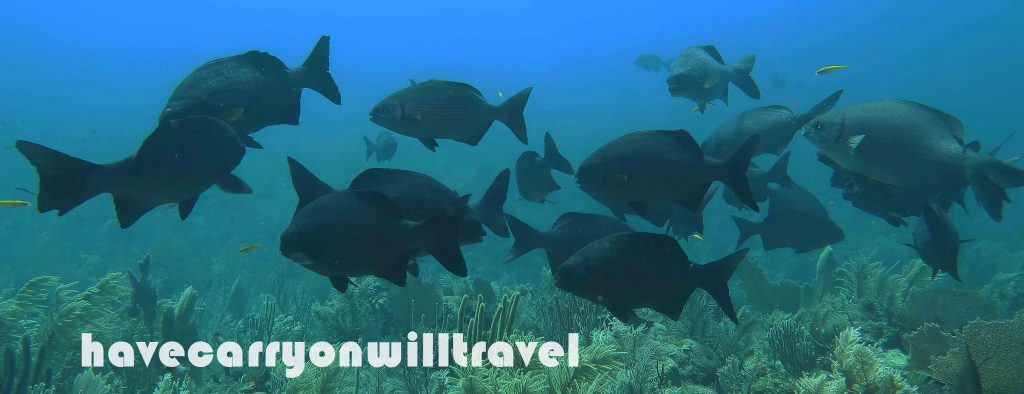

The week passes quickly and before we know it, it is Saturday and we must move onto land again.
Ship ahoy. We are on the boat. Most guests came from Havana and a 7-hour bus ride. It is worthwhile doing some research and finding out there is an international airport in Santa Clara. We had a 2.5-hour taxi ride to ourselves.
6am and we are awake. 7am like clockwork a bit of traffic starts to role by the window of our hostal in Santa Clara. At 8am there is music down the street so loud the people near it have to scream at each other to be heard. 8 o’clock is at least civil. On other Caribbean islands the wake-up time is sunrise. The roosters start crowing. It’s early but not too bad if the dogs that bark all night have let you sleep at all. Cuba, at least Santa Clar,a does not seem to suffer from either of those dirges.
I have heard so many times ‘oh those poor Cuban people’. They don’t look poor to me. There are cars, scooters, three wheeled motor and pedal transports and motor bikes enough to make the streets busy. There are some horse and buggy outfits around which is a little behind the times but really it is quite quaint and the world may soon be back to them anyway which would make Cuba ahead of the times.

Although they are ubiquitous throughout the world, everyone has a cell phone. There seems to be a limited selection of things in the stores but that selection also rotates and what ever is in stock is in abundance. That is similar to the grocery stores in Denmark. What they had they had lots of, they just didn’t always have everything. Where I did notice a big difference is when we hit the highway. There are so few cars on the rural roads, our taxi could just about drive on whatever side of the road he wanted to. For him the speed limit seemed a mere suggestion. They were also a bit redundant as maybe only ½ the vehicles could travel that speed. The horse and cart seemed to be the transport of choice outside the city.
All those old cars Cuba is famous for is a bit of a fallacy as well. Yes, there are cars from the 1950’s and 60’s and most are in immaculate condition but there are far more new cars. Not North American cars but new none the less.
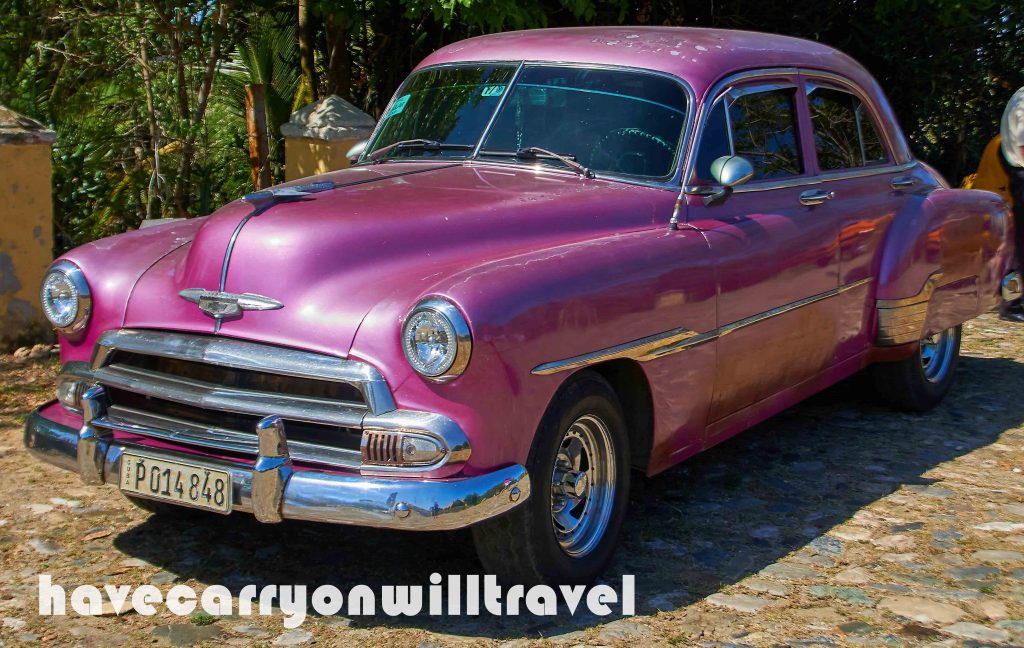
Another point that should be taken into account when traveling here is the car has the right of way. Most places in the world this is true, in fact, even if the law says otherwise but people still wander out into the street with their cell phones in their face and survive. I don’t think they would survive here. Pedestrians are very conscious when crossing the street and for good reason.
Back to the boat. We have set sail and head to the mooring spot from which we will use dive skiffs to reach the diving sites. Again, Debbie and I find ourselves on a boat with less than half of the potential passengers. 16 of a possible 40 are on board and only ½ of those are divers, 1/2 are fisherpeople. (Is fisherpeople a real word?) Should be a fairly exclusive experience. Tomorrow we dive.